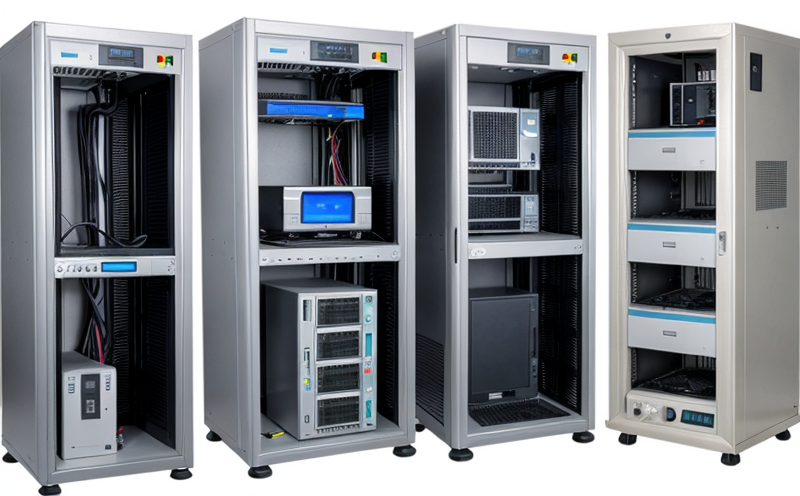IEC 61000 4-6 Conducted Disturbance Immunity Testing for ICT Products
The IEC 61000 series of standards is a cornerstone in the field of electromagnetic compatibility (EMC), with IEC 61000 4-6 specifically addressing conducted disturbance immunity. Conducted disturbance immunity testing ensures that information and communications technology (ICT) products can withstand electromagnetic interference (EMI) without malfunctions or performance degradation.
The global nature of the ICT industry necessitates robust standards to ensure compatibility across different regions, regulatory environments, and technical requirements. IEC 61000-4-6 is widely recognized for its comprehensive approach in simulating real-world scenarios where conducted disturbances can occur, such as power supply noise or electromagnetic emissions from other devices.
Compliance with this standard is crucial for manufacturers to ensure their products meet the stringent requirements set by regulatory bodies like the European Union and the United States. The testing process involves subjecting ICT equipment to various levels of conducted disturbance signals over a wide frequency range, typically between 150 kHz and 80 MHz.
Testing according to IEC 61000-4-6 is essential for several reasons:
- To ensure product reliability in diverse electromagnetic environments
- To comply with international regulations and standards
- To enhance user satisfaction by reducing the incidence of equipment failures or malfunctions
- To foster interoperability between different brands and models within the ICT ecosystem
The testing process is carried out using specialized test facilities equipped with state-of-the-art instrumentation. This ensures accurate measurements and reproducibility, which are critical for quality control in manufacturing environments.
Understanding the significance of conducted disturbance immunity testing in the context of ICT products can help stakeholders appreciate its importance. Below we delve deeper into the standards, methodology, and acceptance criteria that define this crucial test.
Applied Standards
| Standard Number | Description | Purpose |
|---|---|---|
| IEC 61000-4-6 | Electromagnetic compatibility (EMC) - Part 4-6: Conducted disturbance immunity testing | To provide a standardized method for conducting conducted disturbance immunity tests on ICT products. |
| ISO/IEC TR 15925-7 | Temporary voltage dips and short interruptions, transients, and flicker - Part 7: Measurement methods | To specify the measurement techniques for assessing transient phenomena in power supplies. |
These standards form a critical framework for testing conducted disturbance immunity. They provide detailed methodologies that ensure consistent and reliable results across different test facilities, thereby enhancing trust in the ICT industry's quality assurance processes.
Scope and Methodology
The scope of IEC 61000-4-6 encompasses a variety of conducted disturbance sources that can affect ICT products. These disturbances include, but are not limited to, power supply noise, harmonic currents, and electromagnetic emissions from other devices within the same environment.
The methodology for conducting these tests involves several key steps:
- Specification Preparation: Define the test parameters based on the product's intended use and the expected environmental conditions.
- Equipment Setup: Configure the test setup to simulate real-world conducted disturbance environments. This includes using appropriate power sources, grounding systems, and shielding enclosures.
- Test Execution: Subject the ICT equipment to varying levels of conducted disturbances over a specified frequency range. Continuous monitoring is essential during this phase to ensure accurate data collection.
- Data Analysis: Analyze the test results to determine if the product meets the specified immunity criteria. This step involves comparing the measured parameters against the predefined acceptance limits.
- Reporting and Certification: Compile a comprehensive report summarizing the test results and any necessary corrective actions. The final document serves as evidence of compliance with IEC 61000-4-6.
The testing process is rigorous and requires precise control over environmental variables to ensure accurate replication of real-world conditions. This ensures that the ICT products tested are capable of functioning reliably in diverse electromagnetic environments, thus enhancing their overall performance and user satisfaction.
International Acceptance and Recognition
- Europe: IEC 61000-4-6 is widely recognized by European regulatory bodies, such as the CE marking, which requires compliance for market access.
- Americas: Compliance with this standard is mandatory in countries like the United States and Canada, particularly for products intended for sale within these regions.
- Asia-Pacific: The standard is also accepted in key markets such as Japan, South Korea, and Australia. Certification bodies across Asia often require conformity to IEC 61000-4-6 as part of their certification processes.
The global acceptance of IEC 61000-4-6 underscores its importance in ensuring that ICT products meet the highest standards of quality and reliability. The widespread adoption by international regulatory bodies further reinforces the need for thorough testing to comply with these stringent requirements.





